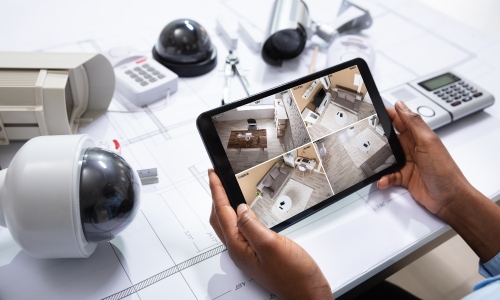In the early days, before IoT products flooded the market, the closest thing most people had to an intelligent home was a security system. But now, with smart home products now infiltrating nearly every American home in some form, security products remain of particular interest to consumers.
“Products like security cameras and smart doorbells continue to capture consumer attention, and users are willing to invest in features they perceive as valuable,” said Ben Arnold, executive director and industry analyst for Circana's consumer technology and office products division.
The information, revealed in Circana's latest Home Automation Ownership and Usage Survey, reveals that security devices remain the most popular smart home product among consumers, despite the category seeing a decline in sales revenue in the year to February 2024.
Of those who own security devices (security cameras, whole-home security systems, smart doorbells), 40% subscribe to a monthly premium service that offers features like 24/7 monitoring, more extensive access to video history, and advanced AI notifications.
Arnold says this highlights an opportunity for the industry to further attract device owners: subscription-based home security services not only offer professionals a way to generate a steady revenue stream, but also a way to add more value to individual products for homeowners looking for more complete coverage for their homes.
At the end of the day, it all comes down to privacy and protection. Device owners say being able to protect their home and belongings is their primary motivation for investing in these products and services. Among those who follow a subscription-based home security plan, 27% of survey respondents said having access to continuous 24/7 video recordings would give them peace of mind, while 19% wanted expanded access to recording history.
Among non-owners, 19% say cost, followed by lack of perceived usefulness, is the reason they don't own smart home products. This sentiment is especially strong among non-owners over the age of 55, with 22% skeptical of the usefulness of smart home products.
As with other categories, Arnold suggests this represents an educational opportunity for experts and manufacturers to better position these types of products in a way that clearly and concisely communicates their usefulness to homeowners.
“With ownership rates steadily increasing among affluent individuals, homeowners and early technology adopters, the continued use of security equipment suggests strong perceived value within the category,” Arnold added.
“Continued investment in smart home technology by professionally monitored security providers will equip the industry with even more tools to attract a wider range of consumers.”
If you enjoyed this article and would like to receive more valuable industry content like this, click here to sign up for our digital newsletter.

